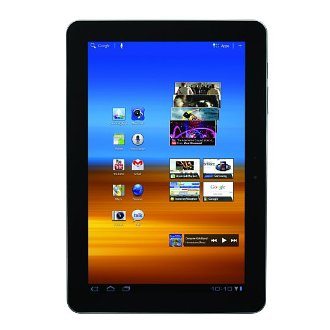In the world of aviation, the reliability and performance of aircraft are heavily dependent on the quality and efficiency of their battery chargers. This guide delves into the specifics of 12V and 24V aircraft battery chargers, essential components in maintaining the health and functionality of aircraft batteries. Understanding these chargers’ features, applications, and maintenance can significantly impact the overall performance of an aircraft.
Understanding Aircraft Batteries
Types of Aircraft Batteries Aircraft batteries are primarily of three types: lead-acid, nickel-cadmium (NiCd), and lithium-ion (Li-ion). Lead-acid batteries, known for their reliability and low cost, are commonly used in light aircraft. NiCd batteries, offering high energy density and a long life cycle, are preferred in commercial and military aircraft. Li-ion batteries are gaining popularity due to their high energy-to-weight ratio, making them ideal for newer, more efficient aircraft designs.
Role in Aircraft Operations These batteries play a crucial role in powering critical systems when the main engine is off. They are essential for starting the engine, powering emergency equipment, and providing backup power for essential electrical systems. Proper maintenance and charging are vital to ensure their reliability, especially in emergency situations.
12V and 24V Aircraft Battery Chargers
12V Aircraft Battery Chargers These chargers are typically used for general aviation and smaller aircraft. They must be carefully selected to match the battery type, ensuring efficient charging without risking damage. Features to consider include automatic charging cycles, temperature compensation, and overcharge protection.
24V Aircraft Battery Chargers 24V chargers are used for larger aircraft, including commercial airliners and cargo planes. They often come with more advanced features like faster charging rates, digital displays, and multi-stage charging processes. It’s crucial to use a charger that is specifically designed for the type of battery in use to ensure safety and efficiency.
Comparing 12V and 24V Chargers
Pros and Cons 12V chargers are generally more portable and easier to use but are limited in their application to smaller aircraft. 24V chargers, while more powerful and suitable for larger aircraft, tend to be bulkier and more expensive. The choice between the two depends on the type of aircraft and its specific power requirements.
Suitability for Different Aircraft Types Generally, light, single-engine aircraft use 12V systems, while larger, multi-engine aircraft use 24V systems. The choice of charger should align with the aircraft’s electrical system to ensure compatibility and efficient charging.
Safety Considerations
Handling and Maintenance Proper handling of aircraft battery chargers is essential for safety. This includes regular inspections, clean connections, and storage in a dry, cool place. Batteries should be regularly checked for signs of wear or damage and replaced as necessary.
Common Safety Protocols Safety protocols include disconnecting the battery before charging, monitoring the charging process, and never leaving a charging battery unattended. Additionally, using chargers with built-in safety features like short-circuit protection and automatic shutoff can greatly reduce the risk of accidents.
Advanced Features in Modern Chargers
Smart Charging Technology Many modern chargers come equipped with smart technology that can assess the condition of the battery and adjust the charging process accordingly. This not only ensures efficient charging but also extends the battery’s lifespan.
Overcharge Protection Overcharge protection is crucial for maintaining battery health. Chargers with this feature automatically stop charging once the battery reaches full capacity, preventing damage from overcharging.
Installation and Setup
Step-by-Step Guide Installing an aircraft battery charger typically involves connecting the charger to the battery terminals while adhering to the aircraft’s specific electrical requirements. It’s crucial to follow the manufacturer’s instructions precisely to avoid any mishaps.
Tips for Efficient Use Tips for efficient use include regular calibration of the charger, ensuring proper ventilation during charging, and avoiding charging in extreme temperatures to maintain optimum battery health.
Maintenance and Troubleshooting
Regular Maintenance Tips Routine maintenance should include cleaning battery terminals, checking for loose connections, and ensuring the charger’s software (if applicable) is up to date. Regularly testing the charger’s output voltage and current also helps in maintaining its efficiency.
Common Issues and Solutions Common issues like failure to charge, slow charging, or overheating can often be resolved by checking the connections, ensuring the charger is compatible with the battery type, and inspecting the battery for any signs of damage.
Cost and Availability
Pricing Factors The cost of aircraft battery chargers varies based on factors like power output, advanced features, brand, and compatibility with different battery types. Higher-end models with smart features and robust construction will be more expensive than basic models.
Where to Buy Aircraft battery chargers can be purchased from aviation supply stores, online retailers specializing in aviation equipment, or directly from the manufacturers. It’s important to buy from reputable sources to ensure product quality and warranty coverage.
Future of Aircraft Battery Charging
Emerging Technologies The future of aircraft battery charging is likely to see advancements in wireless charging, solar-powered chargers, and more efficient, environmentally friendly technologies. These developments aim to enhance the charging process while reducing the environmental impact.
Trends to Watch Trends in the aviation industry include the integration of Internet of Things (IoT) for smart monitoring of battery health, increased use of sustainable energy sources, and the development of ultra-fast charging technologies. These innovations are expected to improve operational efficiency and contribute to greener aviation practices.
Expert Insights
Interviews with Aviation Experts Aviation experts emphasize the importance of choosing the right charger for specific aircraft types. They recommend chargers that offer versatility, reliability, and advanced safety features to adapt to various operational needs.
Recommendations Experts often suggest opting for chargers with a proven track record in the industry, highlighting the importance of balancing cost with quality. They also advise regular updates on charger technology to keep pace with advancements in aircraft battery designs.
In conclusion, understanding the nuances of aircraft battery chargers, whether 12V or 24V, is crucial for the safe and efficient operation of aircraft. By choosing the right charger, adhering to safety protocols, and staying abreast of technological advancements, aircraft operators can ensure optimal performance and longevity of their aircraft batteries. The future of aircraft battery charging looks promising, with advancements aimed at enhancing efficiency and sustainability.






